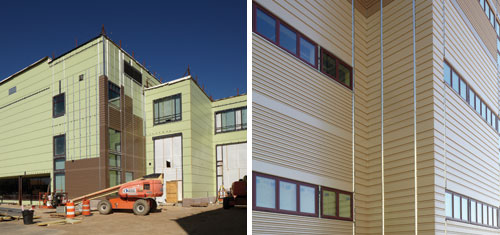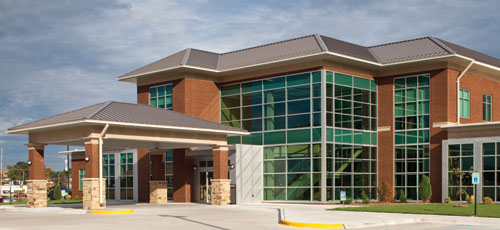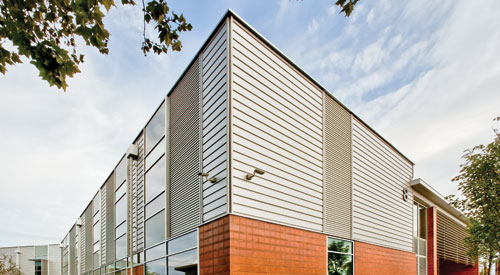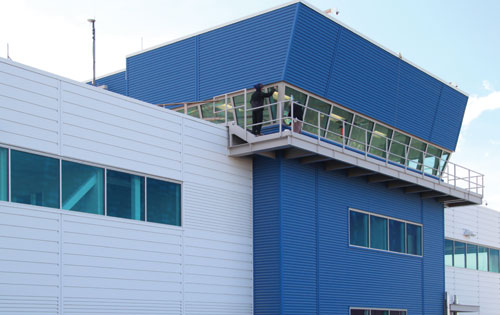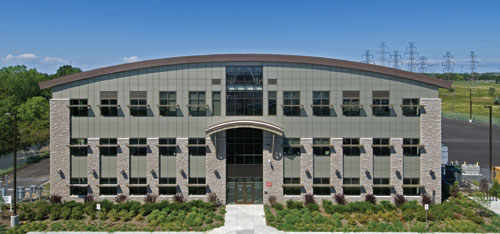Insulated Composite Backup Panels
Conclusion
ICBPs represent a significant contribution to the evolution of exterior wall design. Their single-component fabrication takes the place of four separate materials which speeds installation, reduces installation errors, and saves time and money. They have been shown to provide superior tightness as a barrier to air, water and moisture since the materials are unaffected by water and penetrations are limited by integrating attachments.
Further, they provide rigid building insulation at specified levels that is located outside of metal studs to meet the thermal requirements of current energy codes and green building standards in all climates. The single source responsibility of all of these critical performance components means that they can reliably meet stringent fire codes by providing evidence of successful and replicable testing. In short, they are worth consideration on any building project that uses metal framing as viable and superior alternative to conventional wall construction.
Ten years ago everyone was skeptical of moving the insulation outboard of the studs. That construction now has widespread acceptance. Similarly, I predict in the next few years that the insulated metal composite back-up wall system will be widely accepted and used as a superior solution. - Michael Gurevich, Consultant, New York City Brickwork Design Center.
Case Studies
| Sherwood Middle School Shrewsbury, Massachusetts |
||
The $37-million, 130,000-square-foot Sherwood Middle School will offer a modern learning environment to approximately 1,000 fifth and sixth graders in the Shrewsbury Public School system. Slated to open in November of 2012, the new building takes center stage in a sprawling campus that features the former Sherwood Middle School and the refurbished Oak Middle School. The project offers the latest advancements in K-12 educational facilities, including art and music suites, common rooms, physical education space, a dual-purpose cafetorium, nurses’ quarters and a media center—surrounded by small clusters of general classrooms and special education resource rooms to create an intimate, flexible learning space. Designed by the experienced architectural team of Lamoureux Pagano Associates Architects, Inc., the Sherwood Middle School project was constructed with the highest principles of sustainable design, on-site optimization and state-of-the-art engineering and technical systems. The architects placed equal focus on quality and value—the crux of Lamoureux Pagano’s building philosophy. “With an educational facility, there is no single factor that determines our design choices, but rather a number of equally important considerations—aesthetics, thermal value, weather resistance, installation time and budget,” said Katie Crockett, AIA, Project Architect at Lamoureux Pagano Associates Architects, Inc. “Each of these aspects played a key role in the Sherwood Middle School project.” Beneath the attractive mixed-medium exterior of Sherwood Middle School is over 66,000 square feet of insulated composite backup panels, boosting the project’s thermal value and providing a second line of defense against the harsh weather conditions of America’s northeast. While the 3-inch panels boast a considerable R-value of 21, building designers were more impressed with the product’s unique, single-component construction, eliminating the need for separate batt or board installation, exterior gypsum, air barriers, vapor retarders and building wraps. As Principal Architect and President of Lamoureux Pagano Associates Architects, Inc., Mike Pagano, AIA, knows firsthand the value that this system brings to a project. Pagano’s firm was one of the first in the nation to utilize this improved technology. “As early adopters of insulated composite backup panel technology, we are well aware of the performance enhancements these kinds of products can lend to the building envelope,” Pagano noted. “ICBPs are unique because they offer a single-component design, eliminating the need for multiple installation steps and saving us valuable time and money. In fact, they are one of the reasons why we’re ahead of schedule and under budget.” |
| Cardiovascular Consultants Medical Office Building Cape Girardeau, Missouri |
||
System used: Insulated composite back-up panels that allowed different rainscreen attachments based on different support systems attached to the supporting clips of the ICBPs.
|
| Chemeketa Community College Health Science Complex Salem, Oregon |
||
System used: Insulated composite back-up panels that allowed different rainscreen attachments based on different support systems attached to the supporting clips of the ICBPs.
|
| Goose Creek Correctional Center,
Anchorage, Alaska Wasilla, Alaska |
||
The architect of this demanding project wanted to use an insulated wall system that would not sacrifice energy efficiency in the harsh Alaska winter. ICBPs were selected because they eliminated thermal transfer through the steel studs providing much better overall wall U-values. In addition, a pressure equalized rain screen system was designed and installed – a must in extreme climates such as this one. |
| New York Power Authority Niagara
Office and Warehouse Lewiston, New York |
||
System used: Insulated composite back-up panels that were combined with the appropriate support system for either metal panel or masonry on the exterior.
|
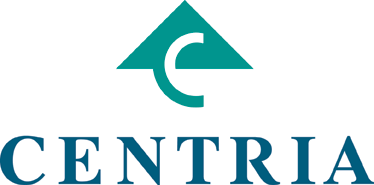 |
CENTRIA innovations in architectural metal wall and roof systems are helping building teams around the world reimagine the building envelope. From inspiration through installation, CENT RIA provides the highest level of expertise including service and support from an elite dealer network based in Pittsburgh (Moon Township, Pennsylvania). Their metal architectural systems are the perfect combination of science and aesthetics, offering advanced thermal and moisture protection, the broadest spectrum of design options, truly integrated components, and superior sustainability. They invite you to explore the limitless possibilities metal provides for your next project and to reimagine metal at www.CENTRIA.com/ReimagineMetal or find them on Facebook. |




